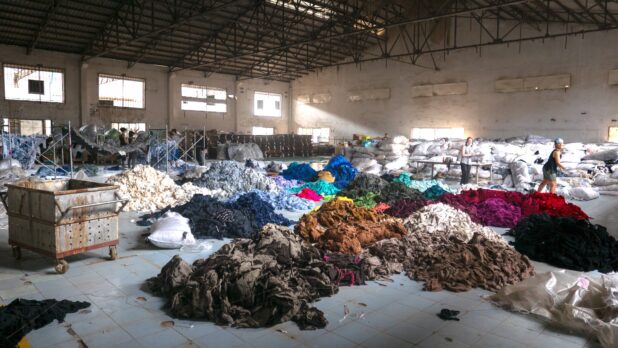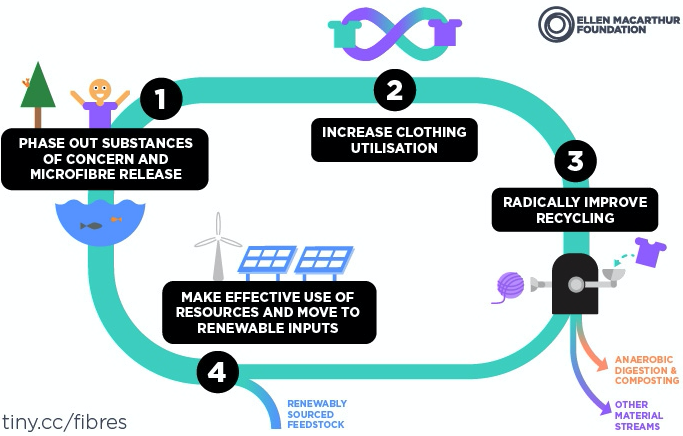
The fashion industry produces more than 100 billion garments annually or about 14 for every person on Earth. Clothing and textiles production releases 1.2 billion tonnes of greenhouse gases every year – that’s approximately 10% of the global planet-warming CO2 emissions or more than all of the international flights and shipping emissions combined.
And if that’s not alarming enough, try this on for size: One garbage truck of clothing and textiles is sent to landfill or burned every second, while just 1% of clothing is recycled into new clothing.
“Fast fashion” focuses on quick production speeds and lower costs to deliver frequent new collections inspired by celebrity or catwalk styles. Retailers are able to tempt shoppers with constant newness and try to convince them that the items they already have are no longer fashionable.
As pressures to reduce cost and production time in the fashion industry mount, corners are often cut, creating negative environmental impacts. Water pollution, the use of toxic chemicals and increasing levels of textile waste are top concerns.
A report released by the Ellen MacArthur Foundation argues that the time has come to radically redesign fashion’s future and move towards a more circular model of textile production and usage that reuses materials wherever possible and keeps our clothing in use for longer, leading to better economic, societal, and environmental outcomes.

Today, scientists believe that combining a super-enzyme that degrades plastic bottles with an enzyme that breaks down cotton could also allow mixed-fabric clothing to be recycled instead of dumped in landfill or incinerated. And at the 2021 Paris Fashion Week, a collection of garments that sequester carbon from the atmosphere were unveiled.
From hemp to fungi, eucalyptus to bamboo, more and more startups are looking to nature for sustainable solutions to how clothes are made. Algae already has a number of applications, including biofuels, a sustainable protein, and bioplastics, and now in fashion. Growing it is fast and cheap, it doesn’t require a lot of water, and it absorbs carbon dioxide from the atmosphere.
For now, shoppers continue to buy fast fashion, but the investment bank UBS believes a consumer backlash could be on the horizon and that “sales of cheap, high-volume clothes could decline 10% to 30% over the next five to 10 years.”
So what’s the best thing we can do as consumers? We can start by keeping our clothing in use for longer periods, shopping at thrift or consignment stores that support the circular economy, donating our unused clothing to those in need, or just buying less stuff!
Learn more @ Quartz

Extreme heat events are getting more frequent and more intense. Globally, heat kills more people than any other natural disaster.…

Annual global bottled water consumption is estimated to have reached 118 billion gallons in 2023. That’s equivalent to 1 million…

The world is driving towards a new era of electric transportation. This is good news for fighting the climate crisis,…